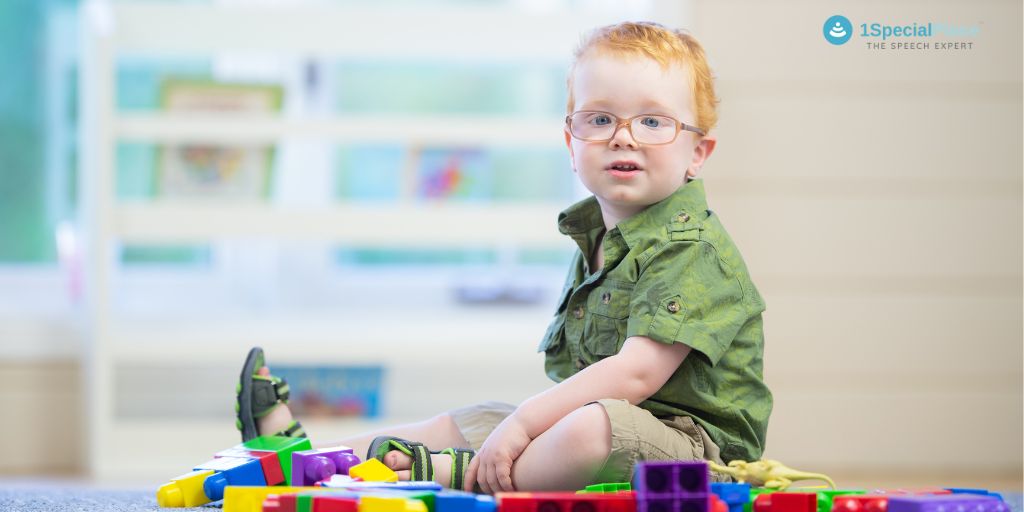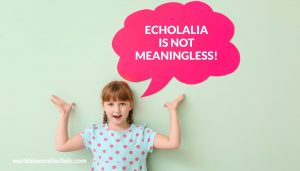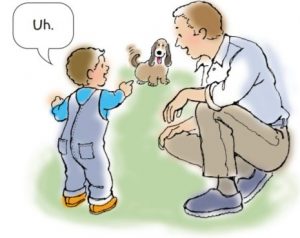
New Perspective: Echolalia and Autism Spectrum Disorder
New Perspective: Echolalia and Autism Spectrum Disorder
Echolalia autism adults, “If you think communication is all talking, you haven’t been listening”
– Ashleigh Brilliant
We all in the Autism community know that Echolalia (verbal repetition) is a feature in the profile of children with Autism Spectrum Disorders (ASD). It is widely believed by caregivers, that echolalia is a negative symptom and it is a reflection of the child’s poor language processing skills. Well, latest research suggests it is not so.
This article will shed light on echolalia and its importance in the process of language development and your role in it.
Why is there Echolalia?
Echolalia is a part of the normal process of language development in children, known as Gestalt Language Processors (Peters 2002). Typical children use the same process but outgrow this stage during the development. On the other hand, children with Autism Spectrum Disorders process language as a whole, E.g.: as “chunks” rather than single words, for much longer into their developmental period. This is exactly why, some children on the spectrum repeat questions “Do you want water?”, phrases “John good job” and so on.
How does Echolalia help?
- Echolalia serves as means for children to interact, affirm, call, protest, label and give directions.
- It helps in language development, vocabulary building and sentence construction.
- Improves cognitive skills such as rehearsal and self-regulation.
What can we do?
We often scratch our heads thinking what can we do! Teaching a different language and putting phrases into right contexts rarely helps. So, what can we actually do?
-
Determine communicative intent:
First and foremost, determine your child’s communicative intent underlying these echoic phrases. Note down your child’s body language, facial expressions, gestures and the situation in which he/she uses echolalia. This will help map what idea is your child trying to express. Try looking at the context of the echoed utterance and figure out what the child is trying to say. Once you have determined the context, model the correct response to your child.
– Note: If you child is repeating phrases from a rhyme he/she has heard, it need not be considered as an interaction.
-
Facilitating communication opportunities:
Provide ample opportunities for your child to spontaneously comment on things in the environment. Avoid asking questions or giving prompts. Increase comments, affirmations and reflective questions. Allow your child to explore and initiate a conversation. Always follow the child’s lead and do not expect specific responses.
-
Use joint-action routines:
Make sure to establish a routine for your child with different communicative contexts, people and objects. It can be as simple as activities of daily living routine. Carry out these routines during which constantly and slowly repeat context specific phrases. Build your child’s vocabulary and sentence formation by pairing your utterances with visual demonstration. Over a period of time, the child will start associating specific sentences to their contexts.
-
Model the child’s response:
A key strategy is to avoid asking questions and to focus more on modelling the child’s response. Eg: Instead of “Do you want chips?”, say “I want chips…” . Stick to using simple statements and keep your speech rate slow. Use easy words such as “Let’s…I want…I am..I see…” consistently. These core words can be combined to form multiple sentences later.
-
Teach “I Don’t Know”:
You can also teach the child to say “I don’t know” for some sets of questions or concepts that the child does not comprehend. Eventually, the child may learn to generalize saying “I don’t know” to new concepts and correctly answer to questions that are known.
As the child’s verbal language increases, echolalia eventually will decrease. This is because echolalia is no longer needed to aid in communication.
Always consult a certified Speech-Language Therapist for appropriate guidance!
- Tele-Speech Remediation of Stuttering: A Case Study - April 22, 2023
- Voice Changes During Puberty in Teenagers - April 11, 2023
- Vital Stim Therapy for Swallowing Difficulty - April 4, 2023





Leave a Comment
(0 Comments)